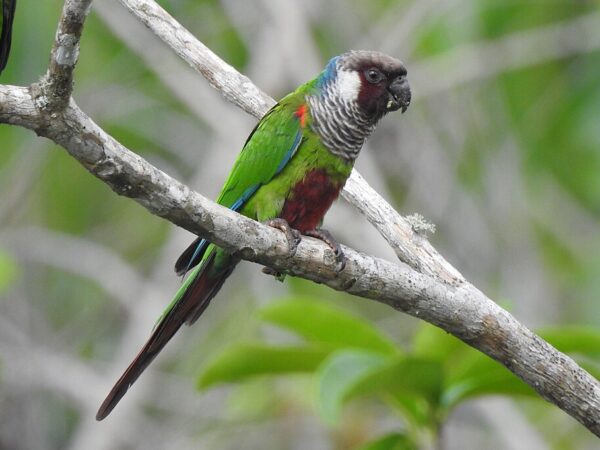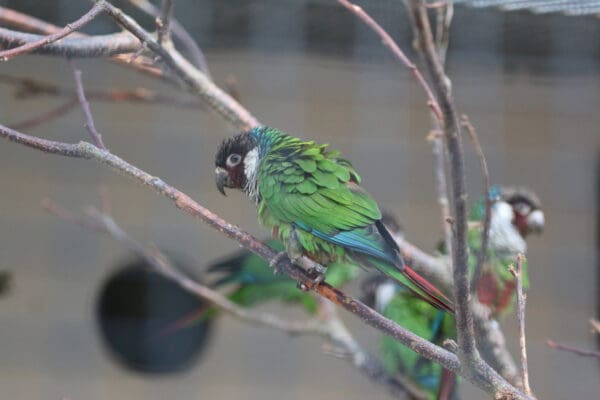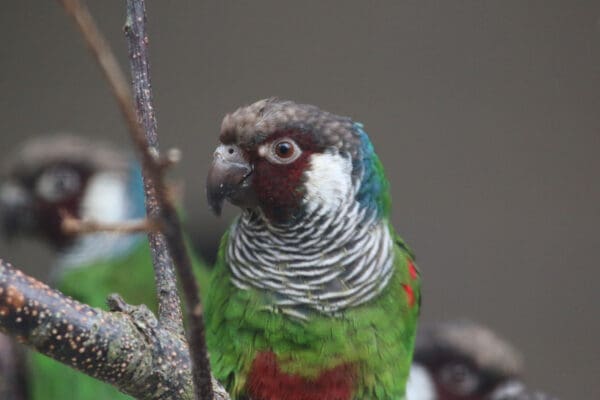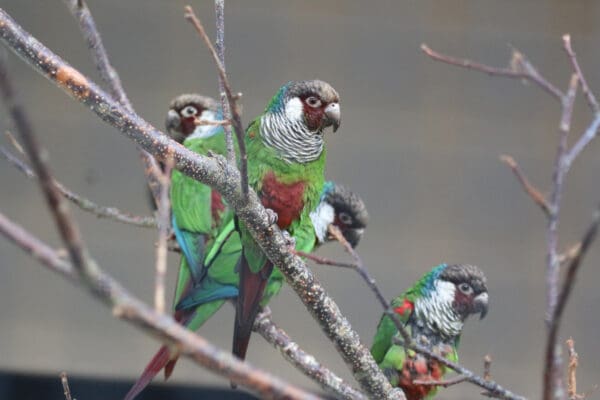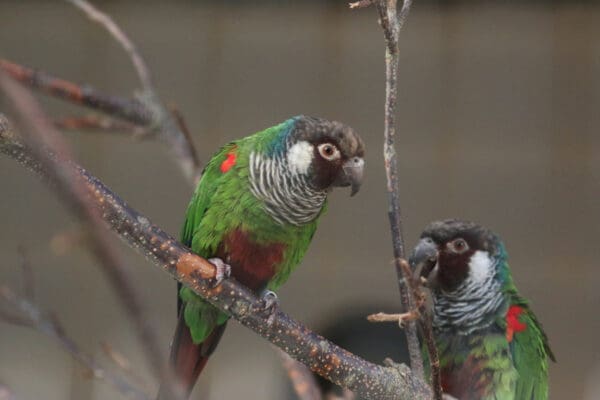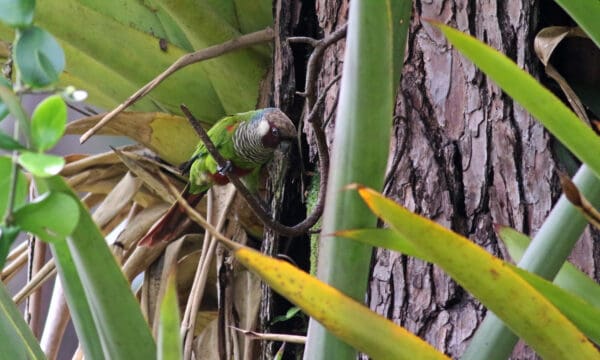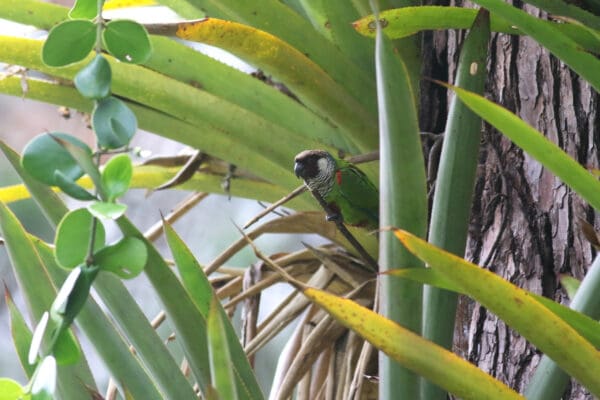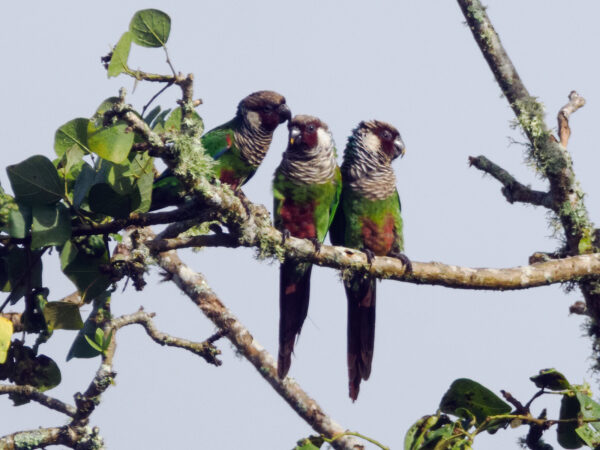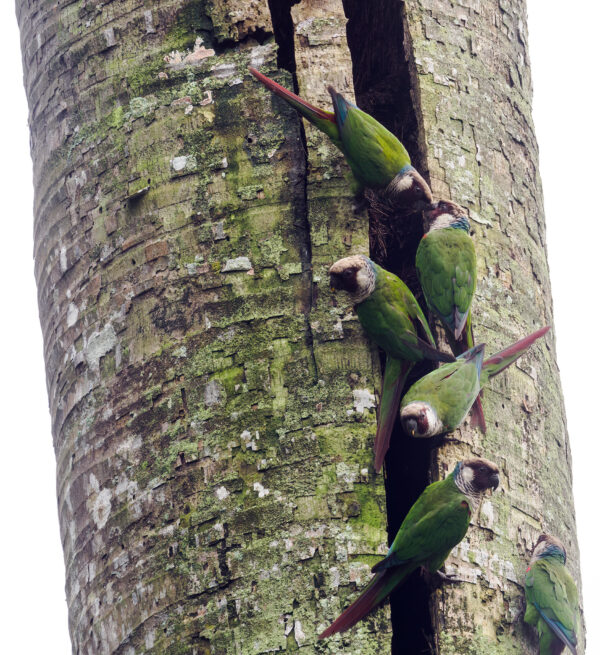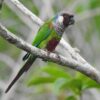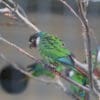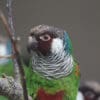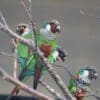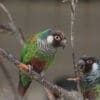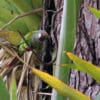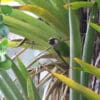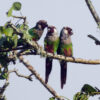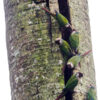Grey-breasted Conure
Also known as:
Grey-breasted Parakeet
Also known as:
Grey-breasted Parakeet
DID YOU KNOW?
The Grey-breasted Conure was once considered conspecific with the White-eared Conure, Pyrrhura leucotis.

Pyrrhura

griseipectus
Size:
23 cm (9 in)
Weight:
About 50 g (1.75 oz)
Subspecies including nominate:
one
Colour Adult:
Both adults in general mostly green; dark brown forecrown to nape, spotted or streaked with white/brown which varies from bird to bird; brown/purple frontal band, cheeks, lores and area around eyes; white ear coverts; dull grey breast barred with white and dark brown; green hindneck, with broad blue edging; brown/red centre of abdomen; patch on lower back to uppertail coverts brown/red; burgundy tail. Beak grey/black. Eye ring bare and grey/white. Eye brown/orange.
Colour Juvenile:
In general duller than adults, with less evident barring on breast; red abdominal patch with scattered green feathers. Cere and bare eye ring white, with less grey.
Call:
Calls made in flight sharp and rapidly repeated in three or four note series; also a high-pitched, staccato chee-cheet. Short, single notes while perched.
More Information:
Content Sources:
CITES
BirdLife International
Cornell Lab of Ornithology/Birds of the World
Parrots: A Guide to Parrots of the World, Juniper and Parr, 1998
Parrots of the World, Forshaw and Cooper, 1989. 2010 edition
Vanished and Vanishing Parrots, Forshaw, 2017.
Parrots of the World, Forshaw, 2006.
Parrots in Aviculture, Low, 1992.
Lexicon of Parrot, Thomas Arndt.
Captive Status:
Rare
Longevity:
—
Housing:
As for White-eared Conure: aviary or suspended enclosure, minimum length 2 m (6 ft 8 in).
Diet:
As for White-eared Conure: fruits such as: apple, orange, banana, cactus fruits, papaya, mango, kiwi; vegetables such as: carrots, green beans, celery, peas in the pod; green leaves such as: Swiss chard, lettuce, kale, sowthistle, dandelion, chickweed; fresh corn; spray millet; small seed mix such as: millet, canary, and smaller amounts of oats, buckwheat, safflower and a little hemp; soaked and sprouted sunflower seed; cooked beans and pulses, boiled maize and complete kibble.
Enrichment:
As for White-eared Conure: enjoys bathing so provide overhead misters or shallow water bowls. Provide lots of unsprayed, bird-safe flowering, fir, pine, willow or elder branches and perches, wooden block and vegetable-tanned leather toys, and heat-sterilised pine cones.
Nest Box Size:
As for White-eared Conure: vertical box 8″ x 8″ x 28″ (20 cm x 20 cm x 70 cm).
Clutch Size:
4-5
Fledging Age:
As for White-eared Conure: 42-48 days
Hatch Weight:
—
Peak Weight:
—
Weaning Weight:
—
World Population:
600-800 individuals, slowly increasing.
IUCN Red List Status:
Endangered
CITES Listing:
Appendix II
Threat Summary:
Known historically from four areas of NE Brazil, but currently survives at just two in Ceará; seems to have been extirpated from several areas, but there are recent records in Baturité Mountains Environmental Protection Area. This species has declined due to habitat destruction, the original forest cover now reduced to only 13% in Serra do Baturité in Ceará. Illegal local and national trade in wild-caught birds is ongoing.
Range:
Restricted to NE Brazil, in Ceará, possibly in Alagoas and at Serra Negra, Pernambuco.
Habitat:
Found up to 1000 m (3280 ft) in forest and forest margins at higher elevations.
Wild Diet:
Reported tree and shrub fruits and seeds include Myrcia, Inga bahiensis, Byrsonima, jambul Syzygium jambolanum and loquat Eryobotria japonica.
Ecology and Behaviour:
Usually seen in small flocks in swift flight; otherwise feeds quietly at the top of the canopy where is easily overlooked.
Clutch and Egg Size:
4-5 elliptical eggs, 26.5 x 19.1 mm (1 x 0.7 in).
Breeding Season:
January-April. Nest is in tree hollow or rock crevice.
